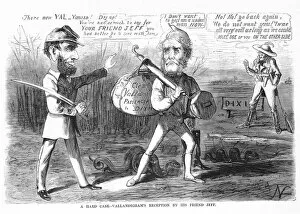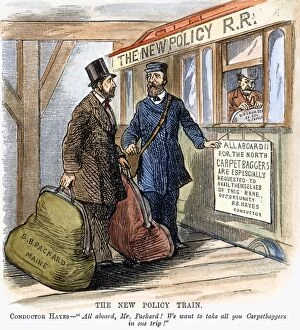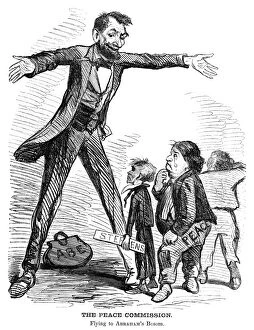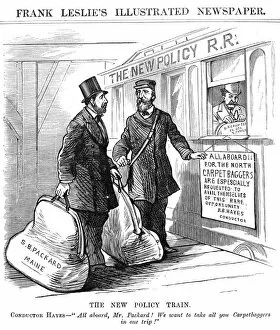Carpetbagger Collection
"Carpetbagger: Carl Schurz and the Controversial Era of Reconstruction" In the late 1860s, amidst a divided nation recovering from the Civil War
All Professionally Made to Order for Quick Shipping
"Carpetbagger: Carl Schurz and the Controversial Era of Reconstruction" In the late 1860s, amidst a divided nation recovering from the Civil War, one name stood out - Carl Schurz. An American army officer, politician, and reformer, he became synonymous with the term "carpetbagger, " a label given to Northern opportunists who ventured into the South seeking personal gain. The engraving of "Carpet Baggers" captures this era perfectly. It portrays individuals carrying their belongings in carpet bags as they arrive in Southern states to take advantage of political turmoil and economic instability. The image speaks volumes about the perception surrounding these outsiders. Another depiction titled "A Hard Case - Vallandighams Reception from his Friend Jeff" showcases how Southerners viewed carpetbaggers with disdain. In this black-and-white photo, we witness a hostile encounter between two men representing opposing ideologies – one being Clement Vallandigham, an Ohio Democrat known for his pro-Southern sympathies. However, not all depictions were negative. "The Carpetbagger, " an oil painting on canvas, offers a more sympathetic portrayal of these individuals. It highlights their role as agents of change during Reconstruction by advocating for civil rights and social reforms in post-war America. Yet controversy continued to surround carpetbaggers' involvement in politics. A cartoon from 1880 compares President Ulysses S. Grant's strong government policies with Rutherford B. Hayes' weaker approach to Reconstruction efforts after federal troops withdrew from the South. "The New Policy Train" cartoon further illustrates this shift in power dynamics following Hayes' presidency in 1877 when federal troops left Southern states entirely. Here we see President Hayes escorting a carpetbagger onto a train heading north – symbolizing an end to Northern influence over Southern affairs. Even Abraham Lincoln was not immune to criticism regarding his stance on reconstruction policies; however, his assassination in 1865 left many questions unanswered.













